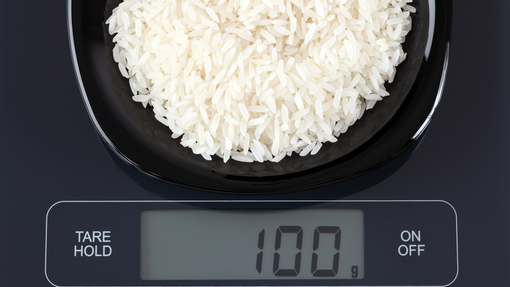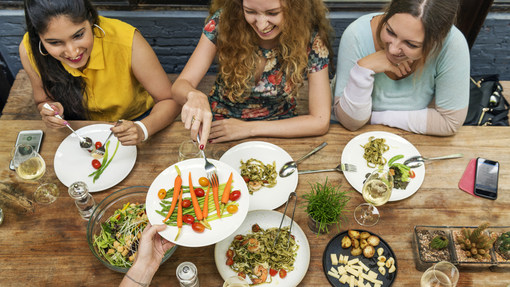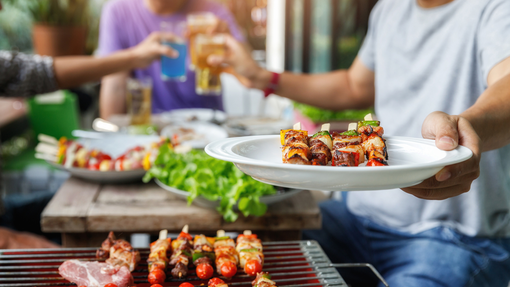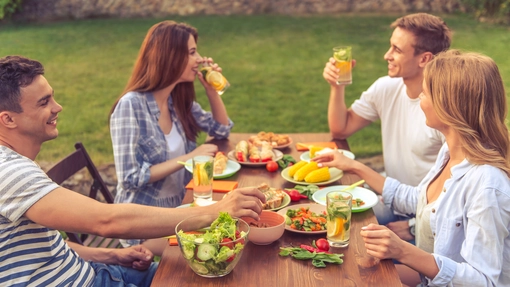Healthy balanced plates of food
As the saying goes, a little knowledge goes a long way and this is certainly true about living a healthier life. Serving the right amount, of the right food, each mealtime will benefit you and your whole family for many different reasons:
Healthier living for you and your family by eating only what you need each day through healthy balanced meals;
Keeping the pounds in your pocket by only buying what you actually need; and
Minimising food waste by only buying, preparing, cooking and serving what you know you will eat.
Healthy living
Eating a good balance of different foods and recommended portion sizes helps us live healthy lives with enough energy to do the things we love doing.
Our portion calculator takes the guesswork away and makes it really quick, simple and easy for you to work out how much food you need to buy and prepare.
Change isn’t always easy but when you know it can have a positive impact on your life and the lives of those you care about – isn’t it worth a go?
One step at a time
Learning about how much of each food group you should eat daily is a great starting point and taking a look at the Eatwell Guide on the NHS website will help you on your way. The information is easy to follow and the Guide includes an interactive element to help you explore each food group in more detail.
Here are some of the main highlights to whet your appetite for more:
Fruit and vegetables – eat at least five portions of a variety of fruit and vegetables a day. This can be from fresh, frozen, tinned, dried or juice.
Starchy carbohydrates – base meals on potatoes, bread, rice, pasta or other starchy carbohydrates – choose wholegrain where possible.
Dairy or dairy alternatives – foods such as milk, cheese and yoghurt are good sources of protein which are needed for the growth and repair of our bodies. They’re also good sources of calcium which helps our bones stay strong. Keep an eye on fat and sugar levels – read the packs as you’ll be surprised how much sugar, in particular, some foods contain.
Other sources of proteins – beans, pulses, fish, eggs, meat and meat alternative food products are also good sources of protein, vitamins and minerals. Foods such as beans, peas and lentils are good alternatives to meat plus they’re lower in fat and higher in fibre and protein. Choose lean cuts of meat and eat less red and processed meats. We only need a small amount of protein each day so check out the right amount for your family members before you plan your meals.
Oils – are essential in our diets as they help keep our cells healthy. Oils contain high amounts of energy (calories) so you should only eat them in very small amounts. Choose unsaturated oils and spreads.
Reduce salt and sugar intake – check the information on food packs, they should all show the amount of salt and sugar in the food you want to buy and compare each brand - you may be surprised how much is contained in your everyday favourite foods.
Drink six to eight glasses of water a day!
Pre-sized measuring tools
As well as the alternative measures we’ve provided in the portion calculator, you can also buy things to make measuring food quick and easy like measuring cups and spoons that are basically scoop-like pre-sized tools for one cup, half a cup etc.
Some recipe books include these cup-sized and spoon-sized measures but you can easily use them by checking how much of a particular food each measuring tool holds e.g. ‘one cup’ of dried rice, and then mark these in pencil against your favourite recipes in your recipe books – then next time, that recipe will be even quicker to make. Most of the popular high street and online stores sell these tools for a reasonable cost.
Our portion calculator will provide you with guidance on how much food you need for each person, for each meal. It’s simple to use as we’ve calculated the typical serving sizes for you!

Simple hacks for serving perfect food portions

Getting the serving size right for children using 'me-sized' meals.





